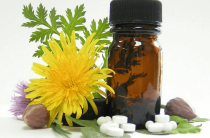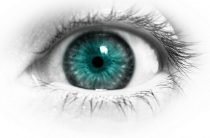It is difficult to give an unambiguous definition of such a concept as an allergy, because it covers a large number of diseases of various kinds and their symptoms.
More recently, allergic diseases were not as dangerous and relevant as now, when the allergization of the inhabitants of the planet has reached unprecedented proportions. This process is explained by the addition of a large number of chemicals of various kinds. So, now food, household chemicals, cosmetics - everything is oversaturated with "chemistry".
The term "allergy" was originally coined by the Austrian pediatrician Clement von Pirket, who noticed that some of his patients had hypersensitivity to certain substances that other people did not cause any reactions.
An allergy is a reaction of the body that occurs due to the ingestion of foreign protein molecules. After the body first comes into contact with an allergen, the immune system begins to distinguish the type of this allergen, and when exposed to it again, it strengthens its defenses. During the reaction, a person's blood flow increases, cell permeability increases, tissue swelling develops, and body temperature rises. All this can provoke the occurrence of anaphylactic shock, bronchial asthma, vasomotor rhinitis, urticaria, false edema, Quincke's edema.
Since there is no unequivocal answer to the question of what specifically causes allergies, several complementary hypotheses have been proposed:
- poor development of the immune system due to excessive hygiene;
- constant contact with toxic substances that are present in the air, food, hygiene products, clothing, etc.;
- dysbacteriosis (violations of the intestinal microflora).
Its consequences can be called: skin rash of various types, sneezing, inflammation of the mucous membranes, asthma, headache. Allergens can enter the human body in various ways:
- through the skin, when a person is injected with a drug, an insect bites him, a poisonous plant scratches him, the use of cosmetics;
- through the esophagus with food, drugs, bacteria, mold, histamine can enter the body with them;
- through the mucous membranes of the nose when a person inhales dust, pollen, dandruff or other substances.
Varieties of allergens
Allergies can be triggered by various types of allergens:
- endogenous (biological, medicinal, household, pollen, food, industrial, physical nature);
- exogenous (cause autoallergy).
Biological allergens include microbes, viruses, fungus, mold, serum preparations. They can cause diseases such as tuberculosis, typhoid fever, which will be accompanied by allergies.
This allergy is called infectious, and diseases caused by fungi, viruses, microbes are called infectious-allergic. Serum or vaccine injected into the body can cause anaphylaxis.
Almost any drug can be attributed to medicinal allergens. The severity of symptoms depends on the frequency and amount of the drug. Therefore, taking any medicine without first consulting a doctor is very dangerous. Symptoms of drug allergy can be exanthema, swelling, pressure drop, tachycardia, fainting, dizziness.
There are three types of diseases that manifest themselves after taking medications. The first type includes diseases of an acute form, which manifest themselves very quickly, which include anaphylactic shock, urticaria, Quincke's edema. Allergic reactions can manifest as allergic dermatitis, immunological disorders, disorders of the kidneys, liver, digestive system, heart and other organs. Drugs often contribute to the appearance of collagenosis.
The second group includes drug reactions of the subacute type, which appear after 24 hours after the drug enters the body. These are diseases such as thrombocytopenia, maculopapular exanthema, fever.
Reactions that appear for several days, and sometimes even weeks, are allergic vasculitis and purpura, an inflammatory process in the joints and internal organs (hepatitis, nephritis, and others). Very often, anaphylactic shock becomes a complication after drug therapy.
It is forbidden to use skin tests in order to determine drug allergies. Because if even a minimal amount of the drug enters the skin, the patient may experience a rapid and severe anaphylactic reaction in the form of anaphylactic shock, which can be fatal.
An effective preventive measure for drug allergies is the introduction of a system of accounting in the cards of inpatients and outpatients. It is very important that the cards indicate what allergic diseases a person suffers from, so that the doctor can prescribe the correct and safe treatment.
Household allergens are house dust, mold, fungi on damp walls and ceilings, insect particles (mites, cockroaches, bedbugs). They can also be epidermal allergens, which include hair, dander, animal hair. Also, they include various detergents and cleaning products.
Allergies affect not only adults, but also children (1/5 of the population). It is very interesting that a healthy person does not react to an allergen in any way. Therefore, the preferred method of treatment will not be the isolation of the patient, but the improvement of his state of health.
Pollen allergens from wind-sprayed plants provoke the occurrence of allergic diseases.
This leads to the appearance of a runny nose, conjunctivitis, and other symptoms of hay fever. The most common allergens are ragweed pollen, a mold that often appears on bathroom and kitchen walls. Allergy can also be caused by the production dust of clothing factories, which contains various small particles of cotton fabrics and threads. Allergenic are also fluff of poplar, dandelion, other plants, flower seeds that are carried by the wind.
Ragweed very often causes allergies, which begins to bloom in August and continues until the first frost. During this period, a lot of pollen is formed, which can cause allergic reactions.
Food allergens include a large number of foods. It can be milk, citrus fruits, meat and fish products, vegetables, fruits, chocolate. Once in the gastrointestinal tract, they enter the bloodstream and provoke an allergic reaction. An allergen that enters the gastrointestinal tract through the mucous membrane of the respiratory tract can also provoke an allergy.
The rate at which food allergies develop can be very high. So, milk, getting into the gastrointestinal tract, can provoke diarrhea, vomiting in a couple of minutes, and after a little more time - fever, itching, urticaria. Often the cause of allergies in children is overfeeding. It is also complemented by diathesis. Allergy is not always the main reason for food incomprehensibility, a lack of enzymes can also lead to indigestion and indigestion.
Allergies caused by industrial allergens such as turpentine, mineral oil, varnishes, various kinds of dyes, arsenic and others. Since chemicals are widely used in everyday life, at work, people who come into contact with them may experience various contact dermatitis.
Physical allergens that can cause allergic reactions in humans are cold, heat, mechanical irritation. Under the influence of these factors, substances are formed in the body that provoke allergies.
Autoallergens (internal) are considered to be the own proteins of tissue cells that can cause allergies. Proteins of tissues of the brain, testicle, lens are considered natural autoallergens. Acquired body proteins are considered to be those that occur in the human body after burns, radiation exposure, and other internal processes when they are combined with toxins, drugs.
In a healthy state, it can distinguish its own proteins from "strangers". But when a person has an autoallergy, his defense system is directed against himself. When the process proceeds in an acute form, a person develops an autoallergic disease. There are suggestions that it also contributes to the occurrence of rheumatism, ulcerative colitis, bronchial asthma.
Many experts believe that one of the main causes of allergies is stress. When a person is depressed, there is a significant nutritional deficiency in his body. As soon as this reserve is replenished again, the allergy disappears. So, if children with asthma, eczema, urticaria begin to consume the liver, vitamin B12, their condition noticeably improves.
Symptoms
Allergy symptoms can be local or general manifestations.
Local symptoms are the appearance of:
- allergic rhinitis;
- allergic conjunctivitis;
- bronchospasm;
- allergic otitis;
- allergic dermatitis.
General symptoms combine several local ones. So, skin rashes, swelling, bronchospasm, itching, shortness of breath indicate the development of anaphylactic shock.
Deadly forms of allergies often occur due to pantothenic acid deficiency. Its deficiency can affect all forms of allergies. It is one of the ingredients that is used in the production of cortisone. If a person suffers from hay fever, giving them cortisone will greatly relieve the symptoms.
Due to pantothenic acid deficiency, patients experience the following symptoms:
- lethargy;
- increased fatigue;
- lack of appetite;
- indigestion;
- unreasonable irritability;
- depression;
- systematic occurrence of respiratory diseases.
The amount of vitamin C, which is necessary for a person to feel good, is 200 mg. For infants who are growing rapidly, the vitamin rate should be higher. The older the child, the less he needs pantothenic acid. Therefore, it often happens that allergies go away on their own with age.
Also, it is very important that a person has good digestion. When the work of the digestive organs is disturbed, partially split particles penetrate the circulatory system and the body begins to produce antibodies against them. the result is an allergic reaction.
When there is not enough useful microflora in the stomach, the process of digesting food cannot be successful. Pathogenic microflora can destroy the integrity of the intestinal mucosa, due to which toxins and allergens easily enter the bloodstream. Therefore, it is very important that a person properly organizes his diet:
- included in the diet foods rich in fiber and nutrients, especially fresh fruits, vegetables, whole grain cereals, bran bread, dairy products;
- I didn’t overeat, sometimes I fasted myself for one day so that the intestines could completely get rid of food.
The blood of many patients who suffer from allergies is saturated with histamine. It is formed due to poor digestion of protein by putrefactive bacteria. And since an insufficient amount of antihistamines (vitamin B6, C and pantothenic acid) in the blood is unable to cope with the neutralization of histamine, an allergic reaction occurs in the body.
The liver can also neutralize histamine with the help of the enzyme histaminase. But in the case when a person is emotionally depressed, he overheats or becomes supercooled, the breakdown of histamine does not occur completely.
Disputes over the use of antihistamines arise due to the fact that they are very toxic and negatively affect the functioning of the liver. A balanced diet will help to normalize the functioning of the liver.
Increased cell permeability contributes to the rapid penetration of allergens into the human body. A healthy cell is reliably protected, it does not allow harmful substances to penetrate into it. But when there is a nutrient deficiency in the human body, the cell walls become more vulnerable. So, if an insufficient amount of proteins enters the body, dyes easily penetrate into the cells.
Vitamin C deficiency causes destruction of connective tissues, which increases cell permeability. Allergy patients are regularly injected with 300-700 mg of vitamin C, thanks to which they can prevent the occurrence of allergic reactions to many drugs, while reducing the duration of treatment. A significant positive effect can be achieved by taking 100 mg of vitamin C daily. Babies are also advised to give a small amount of vitamin C. In patients with hay fever, after taking 2000-3000 mg of vitamin C, all allergy symptoms disappear.
You need to take vitamin C in different amounts, depending on how much the allergen has entered the body. The main symptoms that indicate its deficiency in the body are bleeding gums, nosebleeds, and small hematomas. A disease such as "purpura" is characterized by the spontaneous formation of bruises. It can be caused by allergies, various injections. Since vitamin C is not harmful to the body, it is better to take a little more than not enough.
When the adrenal glands are depleted, when aldosterone is produced in insufficient quantities, a person may begin an allergy attack. With a deficiency of aldosterone, sodium is excreted from the body along with urine, and its concentration in the blood is greatly reduced. As a result, swelling begins to appear, which appears due to the penetration of water into the inflamed tissues of the nose, intestines, brain and other organs. In this case, it is recommended to use a solution of table salt, baking soda, diluted in boiled water. If the procedure performed once did not help, it is worth repeating it. To relieve asthma attacks, foods that contain a large amount of sugar are introduced into your diet.
The emotional state of a person has a great influence on the occurrence of allergies. For example, if you tell a person (who is allergic to citrus fruits) that he is being given orange juice instead of distilled water through a stomach tube, he may begin to have an allergic reaction. Most often, allergies occur at night, when the brain begins to analyze unpleasant memories. The patient begins to show puffiness, bags under the eyes, nasal congestion, and other signs of hay fever. If a person throws out negative emotions (cries), the symptoms will disappear.
An asthma attack that occurs at night can also depend on the emotional state of a person. Bad thoughts cause intense itching, which gets worse because it is impossible to scratch. Symptoms are supplemented by skin rash, hives and eczema. To quickly eliminate these manifestations, it is worth taking medications and a therapeutic diet, and directing negative emotions in a safe direction. Therefore, along with drug therapy, psychotherapy is often used.
People who suppress their emotions and have a pretended gentle and kind nature do great harm to their body. As a result, they begin to try to treat the disease with drugs that cannot effectively affect allergies. Endless trips to the doctors also do not give positive results. The most effective treatment in this case will be a course of visits to a psychotherapist.
Mechanism of allergy
Hippocrates, Avicenna, Galen described cases of people's immunity to certain foods that can provoke disorders of the gastrointestinal tract and the appearance of urticaria. Allergies, which arose many centuries ago, have become the most common due to a significant increase in the number of allergens that now surround us literally everywhere. Since they are contained in the air, food, water, cosmetics, household chemicals.
The protective system (immunity) protects a person from the influence of various infections and other factors. Immunoglobulins, which are produced in the human body, are able to protect against the influence of various microorganisms.
Type E immunoglobulins penetrate the membranes of "harmful" cells, which contain serotonin, acetylcholine, histamine. When these substances are “ejected” from foreign cells, edema occurs, itching, rhinitis, and skin rashes appear. These reactions occur to protect the body - with their help, blood vessels expand, active blood cells are attracted to these areas of the skin, which secrete substances that can destroy "harmful" proteins.
Immunoglobulin can be specific, responding only to specific stimuli, such as a single food product, pollen.
When a person is ill with serious diseases, such as AIDS, hepatitis, the amount of immunoglobulins that are produced in the body decreases significantly. Because of this, the immune system is weakened, the patient becomes defenseless against many infectious and oncological diseases.
Allergens must be large in size and have a sufficiently high molecular weight to promote the formation of antibodies. Thus, they will contribute to the production of antibodies and will be able to pass through the epidermis of the skin, the epithelium of the respiratory tract, and the stomach.
Allergic reactions: types
The human body can respond with specific and non-specific reactions.
Specific reactions appear after the latent period of the development of the disease passes, at which time hypersensitivity to the allergen that first enters the human body develops. This process is called sensitization. It is provoked by antibodies - protein substances that are formed in response to the input of this allergen, or lymphocytes that interact with this allergen. If during the period of time when they are introduced, the allergen is no longer in the body, painful manifestations do not make themselves felt. If the allergen is re-introduced into a sensitized organism, an allergic reaction will occur, which will be the result of the interaction of antibodies and lymphocytes with the allergen. During this reaction, toxic substances are released from the cells into the body, which subsequently provoke the occurrence of allergic reactions.
A non-specific reaction is caused immediately upon first contact with the allergen without sensitization. Once in the body, the allergen immediately affects the cells, tissues and organs. Such a reaction is considered idiosyncrasy - the body's immunity to certain foods, drugs.
Most often, a person manifests precisely specific reactions, which are divided into two types:
immediate and delayed.
An immediate allergic reaction occurs within a quarter of an hour after the penetration of the allergen. Its symptoms are skin blisters, bronchospasm, and gastrointestinal upset.
So, the occurrence of serum sickness occurs 2 weeks after the administration of serum, immunoglobulin, if the serum is administered repeatedly, the reaction occurs much faster.
Its main symptoms are:
- rash with severe itching
- swollen lymph nodes;
- fever.
Quincke's edema turns into limited edema, subcutaneous tissue, mucous membranes, it develops due to the ingestion of any kind of allergen into the body, it manifests itself most often on the face, larynx, gastrointestinal tract. It happens that Quincke's edema has a non-allergic hereditary character.
Allergy does not necessarily develop in people who come into contact with the allergen. It depends on the state of the endocrine and nervous systems of a person, the presence of brain injuries, the constant impact of negative emotions, and the deterioration of the adrenal glands.
Allergy: varieties
There are several main types of allergies:
- food;
- seasonal;
- cold.
The first is caused by some food allergen and manifests itself most often in the form of itching, skin irritation, rashes.
Seasonal allergies (hay fever) are caused by pollen from plants that bloom in spring and summer. This type of allergy is treated by completely isolating the patient from the allergen and prescribing complex therapy, which includes, among other things, taking third-generation antiallergic drugs.
Cold allergy has symptoms such as itching, redness of the skin, shortness of breath, bronchospasm.
Atopic dermatitis or neurodermatitis is a chronic disease that manifests itself in the form of itching, skin rashes, or other dermatological manifestations.
Quincke's edema is considered to be swelling of the mucous membranes of various organs, including the larynx, which is especially dangerous because it leads to difficulty breathing. The main symptoms of this disease can be called pallor, cyanosis of the skin, the appearance of shortness of breath. The appearance of swelling in the oral cavity. An attack can end in death from suffocation if you hesitate to call a doctor.
Anaphylactic shock also occurs and develops very rapidly, within a couple of minutes, and can lead to death. Since some of the vital organs stop working properly in the patient, the pressure drops significantly. If first aid is not provided, it is likely that the person will die.
Types of allergens
Allergens of different nature can provoke the appearance of allergic reactions. They can be:
- food (which include citrus fruits, legumes, various berries, fish products, dairy products, nuts, exotic products, mushrooms);
- biological (include plant pollen, insect venom, house mites, cockroaches, animal hair);
- endogenous (waste products of parasites, fungi, autoimmunization during organ transplantation and other inflammatory processes);
- chemical (washing powder, fragrance, penicillin, aspirin, novocaine).
Urticaria (urticaria)
Allergic dermatitis, which manifests itself in the form of spots on the skin, is accompanied by itching. It can appear on exposed skin that is exposed to ultraviolet radiation, like photodermatitis, or from taking medications or certain foods.
Severe allergy. Anaphylactic shock. Quincke's edema
Both symptoms are very dangerous because they can lead to death. So, Quincke's edema is dangerous due to the fact that it can provoke suffocation. Anaphylactic shock occurs in just a few minutes. During this, the patient's skin turns blue, he does not have enough air, he may faint. Death can occur after half an hour from the moment the allergen is taken orally, or after a quarter of an hour after the insect venom enters the body. If you enter an allergenic substance intravenously, death can occur within five minutes.
First aid for anaphylactic shock
In order not to lose precious time until the ambulance arrives, a patient with anaphylactic shock or Quincke's edema needs to enter an ampoule of adrenaline. It is recommended to keep an ampoule of adrenaline with a syringe in the first-aid kit at home.
- When the toxin has entered the bloodstream due to an insect bite, a tourniquet can be applied.
- Unfasten the top buttons on your clothes so that the blood can flow freely to the head.
- Put him in a comfortable position with his head pointing down, there was free access to oxygen.
- Introduce an antihistamine intravenously: diphenhydramine, suprastin, tavegil.
- Enter intravenously 2.4% solution of aminophylline.
Allergy treatment
To develop immunity to pollen allergy, antiallergic vaccination was applied. A specific immunotherapy has also been developed, which can reduce the hyperactivity of the reaction to insect bites, pet hair, and domestic ticks.
The sequence of allergy treatment is as follows:
- isolation of the patient from the allergen;
- reduction of allergy symptoms;
- elimination of symptoms and the fight against some complications.
When symptoms threaten the life or health of the patient, an ambulance should be called immediately.
There are a large number of treatment methods, the use of acupuncture, respiratory physiotherapy, hemosorption, plasmapheresis, lymphosorption, and even psychotherapy, hypnosis, neurolinguistic programming is considered effective.
The safest are homeopathic remedies that can be used even for babies.
Also, for the treatment of allergies, the SIT method is used, which involves the administration of scanty doses of the allergen to the patient, gradually increasing their number. This procedure allows you to stimulate the immune system and develops greater resistance to the allergen.
SIT treatment is very long, but effective. It can significantly reduce symptoms, even during asthma attacks. Thus, the patient needs less medication to eliminate or significantly reduce the intensity of allergy symptoms.
This method is considered more effective than conventional treatment with antihistamines. Its disadvantage is considered to be that it is directed unilaterally: it is able to eliminate the negative impact of one allergen. And in allergic people, the disease is most often caused by several substances at once.
Allergy medicines
Any drug for allergies belongs to one of three generations. So representatives of the first generation are Diphenhydramine, Tavegil, Diazolin. Their disadvantage can be determined by low efficiency, and a large number of adverse reactions. They call:
- slowing down the reaction;
- lethargy;
- dryness in the mouth.
Antihistamines of the second generation are Claritin, Zyrtec, and the third - Erius, Telfast have significantly fewer side effects.
To cure allergies, calcium is often used, which reduces the level of histamines and increases vascular tone, hormonal drugs. Also, diuretics and sorbents are recognized as effective.
For more information, please contact our consultant.















